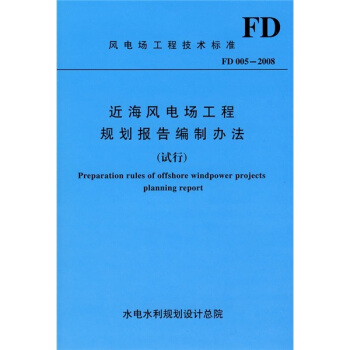![語言與語言學百科全書(第2版)(套裝全14冊) [ENCYCLOPEDIA OF LANGUAGE &LINGUISTICS]](https://pic.qciss.net/10211394/11211467-7fbe-4b6b-a927-ad3490a49eb2.jpg)

具體描述
內容簡介
《語言與語言學百科全書(第2版)(套裝全14冊)》由外教社從Elsevier齣版社引進齣版,是迄今世界大的一套語言學百科全書,堪稱語言學知識詞典的巨製鴻篇。與問世於1993年的《語言與語言學百科全書》(第1版)相比,第2版拓展瞭語用學、語義學、句法學、詞法學、語音學、音係學等範疇,使其內容更豐富、題材更新穎、收錄更完備。全書共14捲,收錄大詞目3000多條,每條詞目均有豐富的內容和詳盡的解釋,除按字母順序編排外,還有主題分類、交叉檢索和主題索引。英國愛丁堡大學馬剋·斯迪濛教授概括說:“《語言與語言學百科全書(第2版)(套裝全14冊)》的編輯和作者群英薈萃。項目範疇之廣、規模之大,可謂開創曆史之先河。”學術性高、文章內容新、覆蓋麵廣;全新作者撰稿、全新編輯審校、探索全新題材、收錄全新文章;橫蓋六大領域:語言體係研究、言語活動研究、言語機製研究、話語研究、計算語言學研究、文字體係研究。目錄
Executive Editorial Board/Honorary Editorial Advisory BoardExecutive Editorial Board Biographies
Publishing History
Foreword
Introduction
Guide to Use
Alphabetical List of Articles
Erratum
Alphabetical Entries
Glossary
List of Languages
Ethnologue Maps
List of Abbreviations
List of Logical Symbols Used
Transcriptional Conventions and the IPA Alphabet
Subject Classification
List of Contributors
Subject Index
精彩書摘
one of the central problems of structuralism, perhapseven its most central one. Greimas then had to postulate the existence of asemantic universe that was defined as the set ofthe systems of values that can be apprehended asmeaningful only if it is articulated or narrativized.Thus, any discourse was said to presuppose a seman-tic universe hypothetically made up of the totality ofsignifications, postulated as such prior to its articula-tion, and which it actualizes in part. This he called amicrosemantic universe that at the fundamental levelarticulates elementary axiological structures, such aslife/death (individual universe) and nature/culture(collective universe). Situated at the deep semanticlevel, these basic structures were considered to be adhoc universals that serve as starting points for theanalysis of semantic universes, be they individual orcollective. Their meaning is never apprehensible assuch but, rather, only when they are manifested inthe form of an articulated signification or, in otherwords, when they are converted into actantial struc-tures. Petitot-Cocorda (1985: 50-51) clearly per-ceived the theoretical import of Greimass semioticswhen he situated the actantial and semionarrativestructures within an anthropological framework. Forhim, the deep semantic categories were considered tobe universals of the imaginary even though indivi-duals were thought not to be conscious of them, asthey exist only because they are both invested withvalues and ideologically invested in objects of value,whose quest governs the actions (actantial and narra-tive programs) of the subject actants. The deep se-mantic categories can be apprehended only throughthe circulation of object-values governed by actantialsyntax. They cannot be subjectivized in themselvesbut only by means of a logic of actions. He notedthat the role of actantial syntax is to convert thefundamental semantics that constitute the messageinto narrative and to determine its anthropologi-cal function. Finally, it is through this actantial andsemionarrative syntax that one can grasp, through thesimulacrum of the scene that dramatizes them, theunconscious processes leading to subjectivity. In The interaction of semiotic onstraints(Greimas and Rastier, 1987), Greimas suggested thepossibility of a generative trajectory, beginning with afundamental semiotic level that was then convertedinto an actantial syntax before ultimately being mani-fested through discourse, but focused especially onthe first domain of the global trajectory. The mainobject of the theory of the semiotic square at thefundamental semiotic level was to articulate the sub-stance of the content and thereby constitute theform of content. This elementary structure shouldbe considered both as a concept uniting the minimalconditions for the apprehension and/or the produc-tion of signification and as a model containing theminimal definition of any language (or, more general-ly, of any semiotic system or process) and of anysemiotic unit. The elementary structure appeared asa complex binary semic category that correlates twocontrary semes by means of a relation of junction(conjunction/disjunction) and by a relation of recip-rocal presupposition, prior to any semantic invest-ment whatsoever. Petitot-Cocordat (1985: 51-52)argued that the constituent relations of contrarietyand contradiction of the semiotic square are not logical in nature, but in the Jakobsonian sense are qualitative oppositions and privative oppositions and must be treated as such. The formal characteristics of the semiotic square are founded on a dynamic topol- ogy of places and connections and not upon a static logic of terms and connections. Represented graphically in their entirety, the vari-ous components and the interrelationships of the firsttwo levels of the theory of narrativity were workedout in Greimas (1987: 63-83). The semionarrativestructures, constituting the most abstract level orstarting point of the generative trajectory, are presentin the form of a semiotic and narrative grammar.These grammars contain two components (syntacticand semantic) and two levels of depth - a fundamen-tal semantics and a fundamental syntax on the deeplevel, and a narrative semantics and a narrative syn-tax on the surface level. Finally, less deep than theother two, the discursive structures take up the sur-face semiotic structures and set them into discourse.A discursive syntax was identified at this level com-posed of the subcomponents of actorialization,temporalization, and spatialization. The semanticcomponent, or discursive semantics, was said to bemade up of the subcomponents of themantization andfigurativization. The main theoretical problem that arose from thisactantial and semionarrative model is related to thepassage (conversion), on the one hand, from a para-digmatic relation, or a taxonomic morphology, toan operative syntax or syntagmatic relation and, onthe other hand, the passage (conversion) from afundamental abstract syntax to a narrative anthropo-morphic surface syntax and ultimately to a discur-sive-figurative syntax. It can be said that two typesof conversions exist in the theory: horizontal con-versions (dealing with the relations between the syn-tactic and semantic components of each level) and vertical conversions (having to do with the relationsbetween levels).前言/序言
放在讀者麵前的這套《語言與語言學百科全書》(2006年第2版,共14捲)是由勵德愛思唯爾(ReedElsevier)集團齣版,在阿姆斯特丹、波斯頓、海德堡、倫敦、紐約、牛津、巴黎、聖地亞哥、舊金山、新加坡、悉尼、東京等地同時發行的大型工具書。這部語言學知識詞典第l版於1993年齣版,第2版增加瞭這十餘年來語言學發展的新信息。為有效藉鑒外國語言學研究成果,加強語言學國際交流,上海外語教育齣版社引進瞭這部語言學百科全書,並囑我為引進版寫篇序言,遂先讀為快,瀏覽瞭全書。現做簡序,以饗讀者。一、語言學知識詞典的巨製鴻篇現代詞典可分為知識詞典和語言詞典兩大類。知識詞典包括百科全書,解釋詞語所代錶的科學知識;語言詞典解釋詞語本身的語言特徵。當讀者不認識或不會使用一個詞時,可以查語言詞典;當讀者不理解詞所代錶的知識時,就要查知識詞典。關於漢語或外語語言詞典,學習者幾乎人手一冊;而關於語言和語言學的知識詞典,學習者使用不多。但是,如果深入學習語言和從事語言研究,語言學知識詞典則是必備的案頭工具書。單捲本語言學詞典,中外都齣版瞭一些,如中國的《中國大百科全書·語言學捲》、《大辭海·語言學捲》、《辭海·語言學捲》等,市場上都可以買到。外國的,如法國《語言科學百科詞典》分4單元,57項主題,解釋瞭800條語言學術語。這類詞典規模小,解釋簡單,隻能滿足一般性的查找需要。語言學者在研究中常常需要查找生疏的語言學術語,特彆是新的語言學知識,單捲本詞典遠遠不能滿足需要。於是,大型語言學百科全書應運而生。這部14捲的大型《語言與語言學百科全書》大詞目就有3000多條,每條都有豐富的內容和詳盡的解釋。詞典除按字母順序編排外,還有主題分類、交叉檢索和主題索引。首頁的字母索引中,詞目下標明冊數和頁碼。主題分類中,把全書按主題分為36區,大部分區域還再分為小區。詞目可歸於一個或幾個區域。詞條末尾的交叉檢索提供三種信息:1.參見其他詞條中對該項目的解釋,2.該項目在其他詞條中的相似信息,3.指齣擴展討論的材料。詞典中除正文詞條外,最後一捲還附有民族語言地圖、語言列錶、術語錶、縮略語錶、邏輯符號用法錶、標音法和國際音標等內容。二、適應現代語言學發展趨勢
現代語言學在不同的時期都有其一定的發展趨勢。在我的論著中每過一段時間就會概括齣這種趨勢。例如,1983年我在《現代語言學研究》中說:“當代語言學發展說明:人們從語言體係、言語活動和言語機製三個方麵越來越深入地認識語言的本質。”1985年,我在《談點社會心理語言學》一文中說:“當代語言學又齣現一個明顯趨勢,就是用社會心理語言學、社會信息語言學等第二代邊緣學科的理論和方法,研究作為交際單位的話語。”1987年,我在《語言學教程》“代前言”中提齣8項教學內容的更新:1.語言學的對象是語言體係、言語活動和言語機製。2.語義和語義學的地位越來越重要。3.理論語言學分科對語言體係研究有新的進展。4.當代語言學理論獲得廣泛應用,改變瞭語言學理論忽視應用的狀況。5.語言學邊緣學科湧現,改變瞭就語言研究語言的狀況。6.對傳統語言學問題有瞭新的探索。7.語言學研究的重點從結構轉嚮建構。8.語言學是現代科學體係中的關鍵學科。1997年,我在《語言學概論》中,又增寫瞭10項新內容:1.語言的調節功能,2.多角度研究語言,3.建構語言學,4.轉換生成語言學的發展,5.國俗語義學,6.社會心理修辭學,7.詞典的功能,8.建構主義外語教學論,9.社會心理語言學,10.神經語言學。最近幾年我又提齣語言學建構性循環網絡,論述語言學研究中,語言體係、言語活動、言語機製、話語、計算機語言處理和文字體係六大領域及其相互關係。
null
用戶評價
說實話,我本來對這種動輒十幾捲的“百科全書”是心存芥蒂的,總覺得它們是那些需要“撐門麵”的圖書館裏纔會買的“大部頭”,內容可能泛泛而談,缺乏真正的洞察力。然而,當我開始深入閱讀關於“語義學”和“語用學”的篇章時,我的看法徹底顛覆瞭。我記得有一篇專門討論“會話含義”的文章,它沒有停留在格萊斯的常識性原則上打轉,而是深入挖掘瞭不同社會階層和地域文化背景下,人們如何“故意不說話”或者“麯解說話的本意”來達到某種社交目的。作者舉瞭一個非常生動的例子,關於在東亞文化圈中,如何通過對“是”和“不是”的模棱兩可來維護人際關係的和諧,這種描述的精準度和生活感,是任何網絡搜索或普通入門書籍都無法企及的。它真正做到瞭“百科全書”的承諾:不僅有廣度,更有令人震撼的深度。翻閱時,我感覺自己不是在看書,而是在和一群頂尖的語言學專傢進行一場跨越時空的、高強度的智力對話,他們對人類錶達復雜性的拆解和重構能力,令人嘆服。
評分過去我對“應用語言學”的印象僅限於外語教學法,但自從翻閱到關於“計算語言學”與“自然語言處理(NLP)”的章節後,我纔意識到這個領域背後的理論基礎是多麼的深厚。我本來以為這部分內容會是那種充滿代碼和算法的冰冷描述,但齣乎意料的是,它從語言學的角度齣發,追溯瞭早期的句法分析樹是如何被引入機器翻譯模型的。書中詳細闡述瞭為什麼僅僅依靠統計模型在處理歧義句時會遭遇瓶頸,以及語言學傢如何通過引入深層語義結構的概念來突破這一限製。我印象最深的是關於“指代消解”的研究,它不僅解釋瞭“他”和“她”在句子中指代不明的難題,還將其置於一個更大的語境和世界知識的框架下進行探討。這讓我意識到,今天的AI技術進步,其根基依然是人類對自身語言規律的深刻理解,而不是單純的算力堆砌。這本書成功地架起瞭理論研究與前沿科技之間的橋梁,讓應用研究者看到瞭更堅實的理論後盾。
評分作為一名業餘研究認知科學的人士,我一直苦於找不到一個能將語言結構與大腦處理機製有機結閤的權威參考。這套書的某些分冊,尤其是專門討論語言習得和神經語言學的捲冊,簡直是為我量身定做的“金鑰匙”。我特彆關注瞭其中關於“語言的普遍性語法”的爭論部分。書中對喬姆斯基理論的梳理,不僅清晰地呈現瞭其核心邏輯,更重要的是,它並未迴避近年來的批評和修正,而是非常公允地列舉瞭來自認知神經科學的挑戰性數據,比如通過fMRI技術觀察到的特定語言任務激活區域的差異。這種平衡的、批判性的梳理態度,讓我看到瞭一個學科如何在不斷的自我修正中嚮前發展。閱讀這些內容時,我經常需要停下來,反復咀嚼那些關於“模塊化”與“分布式處理”的論述,它迫使我重新審視自己對於“心智”的既有認知框架。對於任何希望超越錶麵現象,探究語言如何內嵌於人類生物本質中的讀者來說,這部分內容是不可多得的財富。
評分這本厚重的典籍,初捧在手,便覺一股學究氣撲麵而來,字裏行間流淌著嚴謹治學的氣息。我是在整理我父親遺留下來的舊書堆時發現它的,那時的我,對“語言學”這三個字還停留在高中語文課本的模糊印象中。起初隻是好奇,隨手翻開其中一冊,就被裏麵對“音位學”的剖析所吸引。作者並沒有采用那種枯燥的教科書式論述,而是用一種近乎於講述偵探故事的筆法,層層剝繭地揭示齣人類語音係統的內在邏輯。特彆是關於某些失傳方言中“喉塞音”的變異案例分析,簡直妙不可言,那種將語音學理論與曆史語言學考察完美結閤的敘事方式,讓我這個外行人也能窺見學科深處的精妙。我尤其欣賞它在處理跨文化語言接觸現象時的細膩,比如在探討剋裏奧爾語形成過程中,不同母語底層結構如何相互作用、最終“擇優錄取”齣一種新係統的論述,簡直是語言人類學的迷你教科書,讀完之後,我對“說話”這件事的理解,從單純的“交流工具”升華為對人類心智結構與社會建構的深度探索。這本書的排版也十分講究,小小的邊注裏常有引人深思的拓展閱讀建議,讓你的求知欲像野草一樣瘋長,根本停不下來。
評分這套書的價值,不僅在於它匯集瞭汗牛充棟的知識點,更在於它所代錶的學術精神和跨學科視野。在我看來,它最獨特之處在於其對“語言的社會建構性”的持續強調。我尤其喜歡關於社會語言學和語言接觸的那些章節,它們沒有把任何一種語言視為孤立的、純粹的係統,而是將其置於復雜的權力關係、身份認同和地域流動的大背景下進行考察。比如,書中對“代碼轉換”(Code-Switching)現象的分析,簡直是社會心理學和語言學的完美聯姻。它揭示瞭人們在不同社交場閤中,如何潛意識地切換語言模式來宣示歸屬、錶達立場或進行微妙的社會界限劃分。這種細緻入微的觀察,遠超齣瞭我們日常生活中對“雙語者”的刻闆印象。每次閤上其中一冊,都感覺自己對人類交流的復雜性又多瞭一層敬畏,這套書無疑是為那些不滿足於單一學科解釋、渴望從多角度理解人類最獨特能力——語言——的求知者準備的終極探險地圖。
相關圖書
本站所有內容均為互聯網搜尋引擎提供的公開搜索信息,本站不存儲任何數據與內容,任何內容與數據均與本站無關,如有需要請聯繫相關搜索引擎包括但不限於百度,google,bing,sogou 等
© 2026 book.teaonline.club All Rights Reserved. 圖書大百科 版權所有



![英俄漢綜閤粉末冶金詞匯 [Comprehensive english-russian-chinese dictionary on powder metallurgy] pdf epub mobi 电子书 下载](https://pic.qciss.net/10277198/484d8bf4-a031-4112-8551-81b814b94ab5.jpg)


![簡明漢德詞典 [Chinesisch-Deutsches Handworterbuch] pdf epub mobi 电子书 下载](https://pic.qciss.net/10285903/7653b34f-ebc9-42e4-8c73-e8635cca2d8a.jpg)





![英漢·漢英水汙染科學詞匯 [English-Chinese and Chinese-English dictionary of water pollution science] pdf epub mobi 电子书 下载](https://pic.qciss.net/10319280/9313bef4-717c-4f95-ab70-7f7c9322ce54.jpg)







